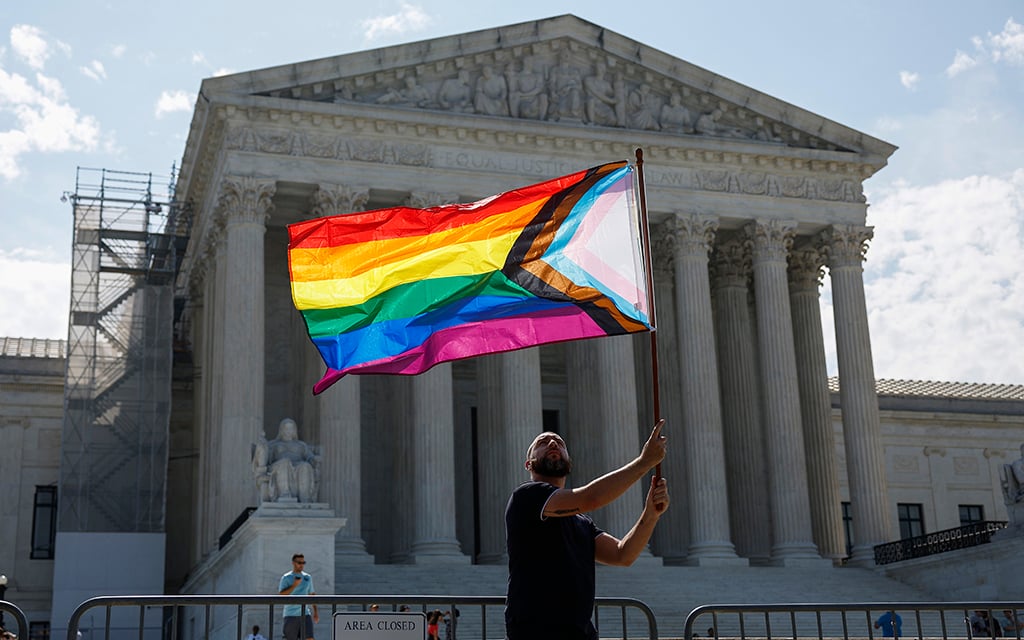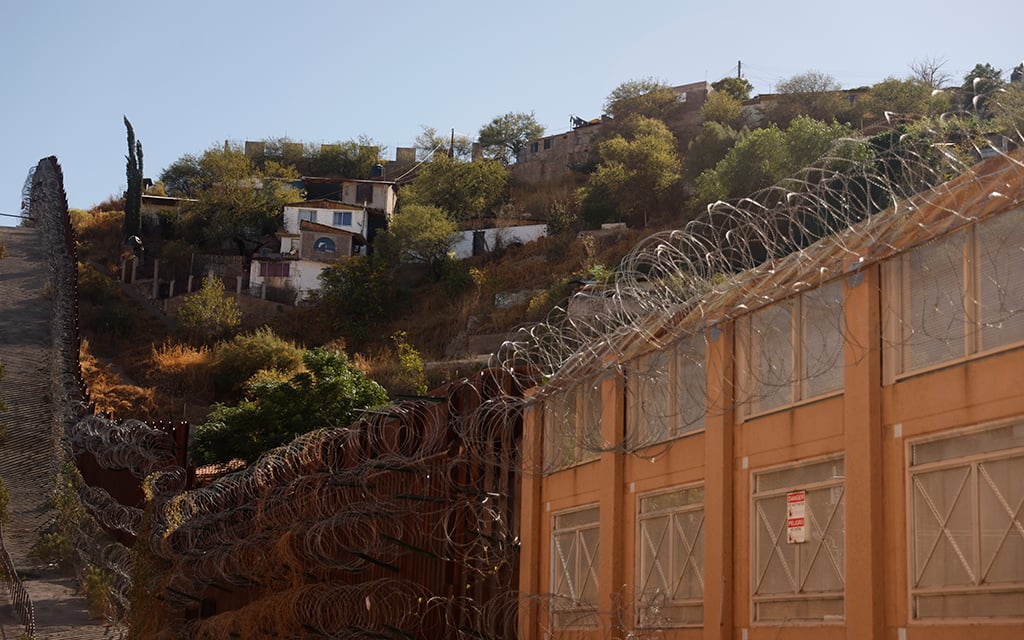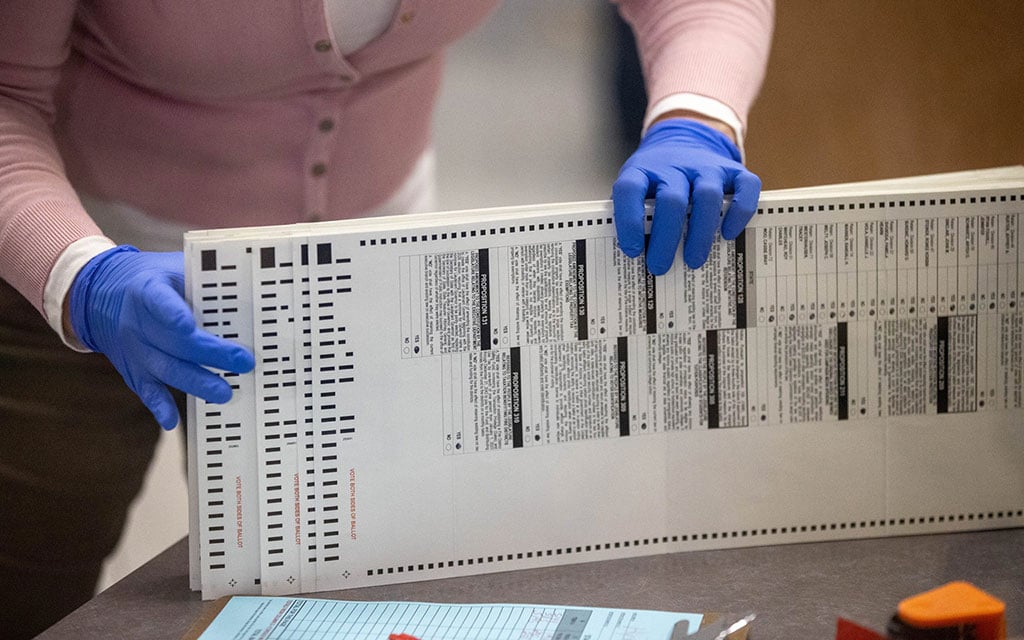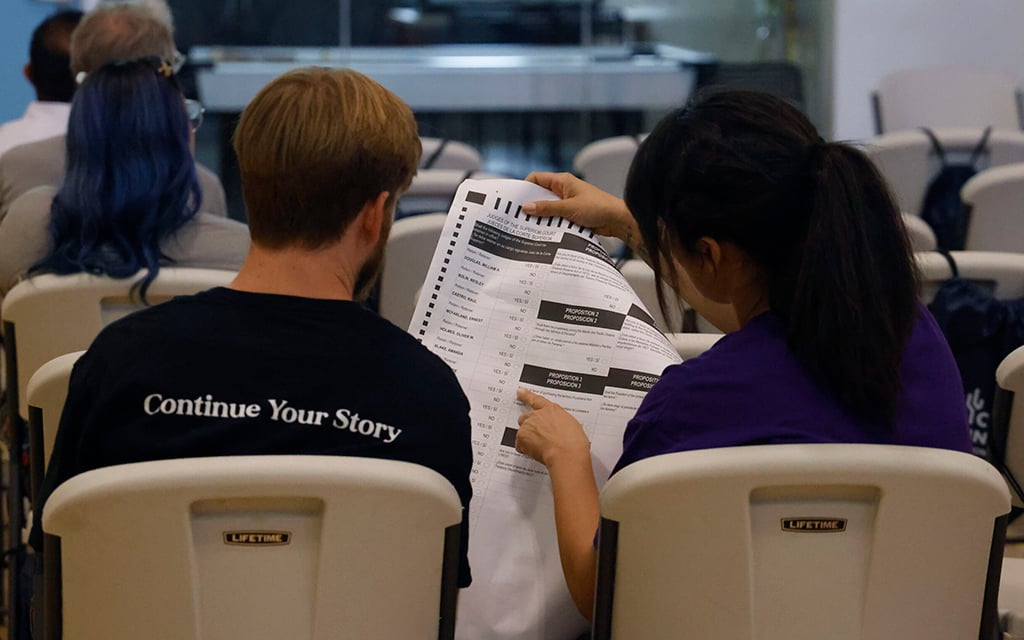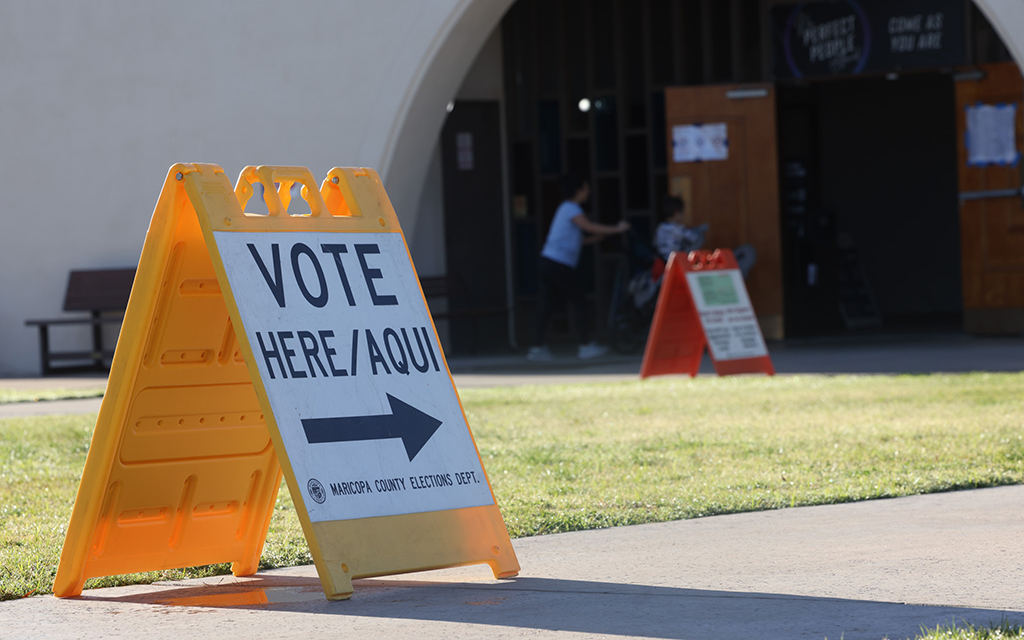WASHINGTON – Former President Donald Trump has been reelected, defeating Vice President Kamala Harris.
The Associated Press called the race at 3:35 a.m. Wednesday, Arizona time, after a Trump victory in Wisconsin put him over the top.
The 45th and soon to be 47th president is the first convicted felon elected commander in chief. Grover Cleveland was the only other former president returned to office, in the election of 1892.
Arizona was one of seven battlegrounds this year and by the time Trump had garnered the 270 electoral votes needed to clinch, counting was still underway. By 5 a.m. Trump held a narrow lead, about 100,000 votes out of 2.1 million, with only half of all ballots counted. Results were also still pending in Michigan and Nevada.
But Trump, overperforming against polls that showed the contest a near dead heat, had by then racked up wins in Pennsylvania, North Carolina, Wisconsin and Georgia.
Harris is the second woman nominated by a major party to lose a presidential election. The first was former Secretary of State, senator and first lady Hillary Clinton eight years earlier. Both are Democrats. Trump defeated both.
Four years ago, just over 10,000 votes separated the winner and loser in Arizona’s presidential race. The state is one of seven battlegrounds destined to decide the outcome in 2024, too.
Polls remained tight until the end between Harris and Trump.
By 12:30 a.m. MST Wednesday, Trump was just three electoral votes short, leading Harris 267 to 214. Some major television networks called the race in his favor, and he declared victory to a room full of supporters at his Mar-a-Lago resort in Palm Beach, Florida.
Republicans have won all but two presidential contests in the Grand Canyon State since 1952. Bill Clinton won by 2.2 percentage points in 1996. In 2020, President Joe Biden edged past Trump by a mere 10,457 votes out of nearly 3.4 million.
Arizona has been trending purple in recent years. Republicans hold an edge in voter registration – 36% to 29% for Democrats, according to the Arizona Secretary of State – but haven’t won a U.S. Senate race since 2016. Democrats nabbed the governorship in 2022.
With a third of the electorate unaffiliated, Trump and Harris devoted significant time and resources to motivating their parties’ bases and courting independents.
Paul Bentz, a conservative analyst at the HighGround consulting firm, noted that Trump had a stronger lead in Arizona before President Joe Biden dropped out on July 21.
“Arizona is still a red state,” he said, though he acknowledged that voters have been fickle over the years, supporting candidates of both parties.
Harris stumped in Arizona three times since replacing Biden as the Democratic nominee. Her final push was Thursday with a rally in Phoenix. Trump was in Glendale that day, the last of six Arizona appearances since Biden dropped out.

The scene at Vice President Kamala Harris’ speech on the Ellipse outside the White House on Oct. 29, 2024, a week before Election Day. (Photo by Grace Monos/Cronkite News)
Both devoted the final days of the campaign to other battlegrounds, especially Pennsylvania, which remained a dead heat to the end. With 19 electoral votes, Pennsylvania was the biggest prize among the swing states. Arizona has 11.
Trump’s running mate, Ohio Sen. JD Vance, made seven trips to Arizona, the last time on Saturday with a stop in Scottsdale.
The Harris campaign sent a regular flow of celebrities and surrogates, including Bill Clinton and Barack Obama. On Sunday, actress Eva Longoria was among the headliners at a “Latinos con Harris-Walz” block party that included Sen. Mark Kelly and his wife, former Congresswoman Gabby Giffords.
Democrats went into Election Day hoping for a boost in turnout from a ballot measure that would enshrine abortion rights in the state constitution, as similar measures had done in other states in 2022 after the U.S. Supreme Court overturned Roe v. Wade.
Harris was relentless in painting Trump as a threat to women’s reproductive rights. She and her allies warned that he would try to impose a national ban on abortion, which he denied. And they regularly reminded voters that he’d named three of the Supreme Court justices who voted to overturn Roe.
While Trump played defense over abortion rights, he pushed the attack on border security and illegal immigration – weaknesses for the Democrats.
He blamed Harris and Biden for a spike in fentanyl deaths and accused them of leaving the southern border effectively open – glossing over the fact that illegal crossings have plummeted from record levels last December to levels comparable to when he was in office. The 54,000 apprehensions in September was the lowest number since August 2020, five months before Trump’s term ended.
In 2016, building a border wall was his signature campaign promise. This time, it was mass deportations.
“I will launch the largest deportation program in American history,” Trump said at a rally in Tempe on Oct. 24. “We will put these vicious and bloodthirsty criminals in jail, or we’ll kick them the hell out of our country.”
The National Border Patrol Council, a union that represents Border Patrol officers, embraced Trump, adding weight to his emphasis on border security.
Harris tried to blunt the attacks on her border security record with a September visit to Douglas, an Arizona border town with low rates of illegal crossing. She talked tough on fentanyl and blasted Trump for quashing a bipartisan deal earlier this year that would have significantly beefed up border security.
“As president, I won’t only bring back the border security bill that Donald Trump tanked,” Harris said in Douglas. “I will take further action to keep the border closed between points of entry.”
Trump’s harsh rhetoric and hard line on immigration may have cost him support among Latter-day Saints, a significant bloc in Arizona that traditionally leans Republican. Arizona has nearly half a million Latter-day Saints, and church members are involved in mission trips and often share a more welcoming mindset toward migrants.
The contest took an unexpected turn when Biden abruptly dropped his bid for reelection after a weak debate against Trump. Rep. Raúl Grijalva, D-Tucson, was the second Democrat in Congress to publicly call for him to step aside.
Few other prominent Arizona Democrats spoke out. All quickly fell in line behind Harris when Biden threw his support behind his vice president.

A sign outside polling sites in Phoenix reminds voters that only 10,457 votes separated winner Joe Biden from runner-up Donald Trump in Arizona in the 2020 presidential contest. (Photo by Brendon Pricco/Cronkite News)
Harris won the support of Jimmy McCain, son of the late Sen. John McCain, the 2008 GOP nominee who Trump often disparaged – questioning his status as a war hero and blasting him for providing a critical vote to protect Obamacare.
“I was never a fan of John McCain and I never will be,” Trump said in 2019, the year after McCain’s death. As president, Trump had resisted issuing an order for flags to fly at half staff when McCain died – an affront to many Arizonans and to veterans who revered McCain, who had’d spent more than five years as a prisoner of war in North Vietnam.
Harris and Trump both courted Latinos in Arizona, a group comprising about 32% of the population and about one in four voters.
At Harris’ Halloween rally in Phoenix, she reminded voters how Trump “insults Latinos” and “scapegoats immigrants.”
In Glendale that day, Trump taped a conversation with former Fox News commentator Tucker Carlson, attacking Harris over inflation of the past few years that has subsided but left prices for gas, groceries and housing far higher than when he left office.
The vast majority of Latino voters – 85% – called the economy a top factor when deciding who they would vote for, according to a Pew Research study.
Unemployment in Arizona stands at 3.5% – far lower than the 6.4% when Trump left office. Gas prices have risen since then from $2.40 per gallon on average to $3.22, according to AAA.
Maricopa County was the focus of unsubstantiated Trump claims about fraud after his 2020 defeat. The fraud claim led to a recount of all ballots cast in Maricopa County. An audit of all tabulation equipment was completed, and ballots were verified in the end.
The presidential fight overshadowed the race for an open U.S. Senate seat between Phoenix Congressman Ruben Gallego, a Democrat, and Kari Lake, a former Phoenix news anchor closely allied with Trump.
In some states, the popularity of a GOP Senate nominee provided coattails for Trump to take advantage of. That was not the case in Arizona.
Lake, who echoed Trump’s false claims about fraud in the 2020 election and refused to concede defeat in her own 2022 gubernatorial race, appeared with him at multiple rallies in Arizona.
But her support gave little boost to Trump. His strength in polls far outpaced hers throughout the campaign.




